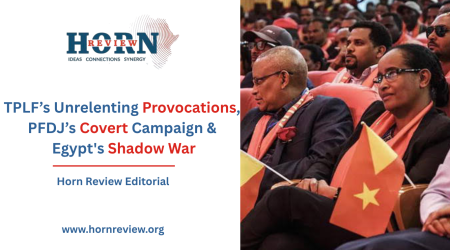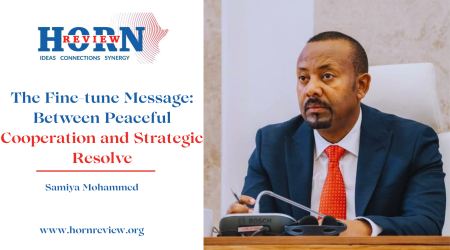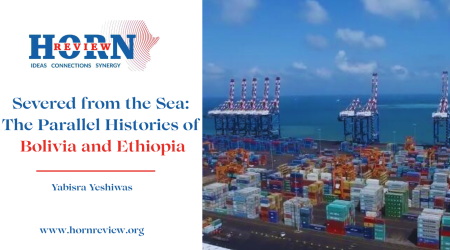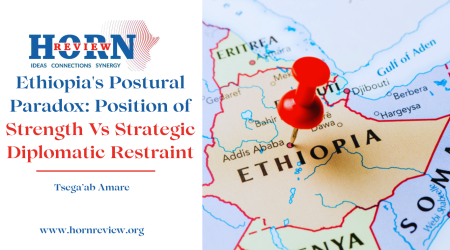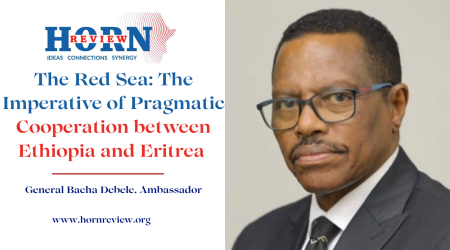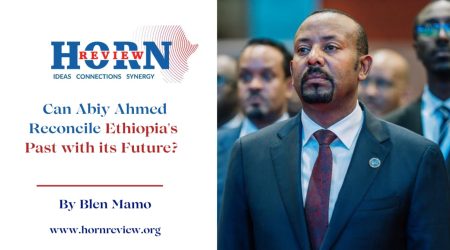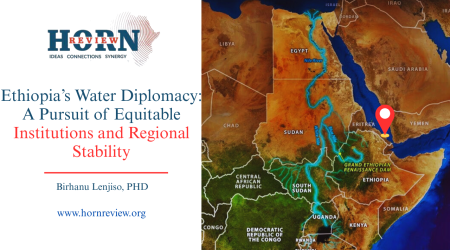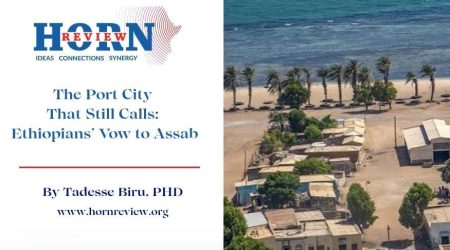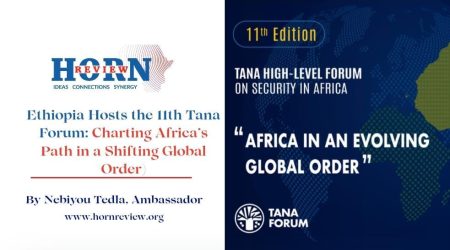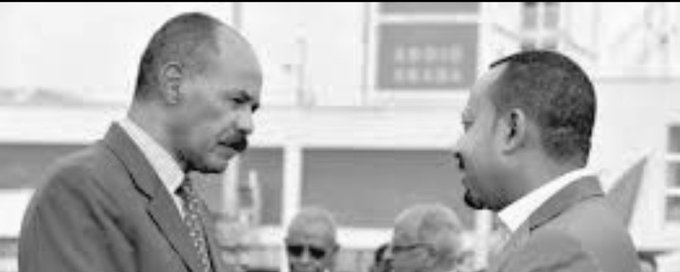
27
Jun
Beyond Afeworki: Should Ethiopia Move to Mold Eritrea’s Next Chapter?
For over three decades, Eritrea has functioned under the autocratic stewardship of President Isaias Afwerki, whose tenure represents a paradigmatic case of personalist authoritarianism entrenched through militarization, institutional opacity, and a systematic abrogation of civic and political freedoms. The absence of constitutionalism, electoral legitimacy, and institutional checks has not only rendered the Eritrean state structurally brittle but has perpetuated a climate of fear, surveillance, and coerced conformity. In the absence of a formal succession mechanism, the regime’s longevity has become a liability for both domestic governance and regional security.
The apparatus of control in Eritrea, anchored in the People’s Front for Democracy and Justice (PFDJ), operates as a vertically integrated command structure in which executive decision-making is monopolized by the presidency. With the 1997 constitution indefinitely suspended and no electoral processes conducted since independence, the state has effectively merged the party, the military, and civil administration into a unified authoritarian bloc. National service, initially envisioned as a civic duty, has evolved into an open-ended conscription regime that immobilizes an entire generation – functioning less as a national defense measure than as an instrument of systemic control.
This architecture of repression has precipitated one of the most enduring patterns of youth flight in contemporary Africa. Eritrea’s rural and peri-urban settlements are increasingly defined by demographic attrition, with entire communities denuded of working-age populations. The sociological implications are stark: ghost towns populated primarily by the elderly, economic stagnation, and a fractured intergenerational continuum. The exodus has produced a vibrant but politically marginalized diaspora, whose members are often subject to extraterritorial state pressure in the form of the controversial 2% “diaspora tax” – a mechanism widely criticized for lacking transparency and, in some jurisdictions, allegedly enforced through coercive means.
There is credible evidence suggesting that Eritrean diplomatic missions and affiliated transnational networks serve dual functions: formal diplomacy and informal revenue generation. These networks, often operating under the banners of “development contributions” or “martyrs’ family funds,” reportedly solicit foreign currency through opaque channels, raising questions about the legal and ethical boundaries of such operations. While the Eritrean government consistently rejects allegations of impropriety, the cumulative weight of international scrutiny underscores a persistent disjuncture between the state’s official narrative and observed practice.
At the geopolitical level, the Isaias regime has long employed a strategy of regional destabilization as both a diversionary tactic and a means of preserving strategic relevance. From alleged support to armed insurgencies in neighboring states to its volatile posture toward multilateral institutions, Eritrea’s foreign policy has been characterized less by constructive engagement than by calculated obstruction. Nowhere has this antagonistic posture been more consistently directed than toward Ethiopia – a country that has borne the brunt of Asmara’s strategic belligerence for nearly a century.
Against this backdrop, Ethiopia must recalibrate its strategic posture vis-à-vis Eritrea. The prevailing tendency toward reactive diplomacy – alternating between normalization attempts and containment – has failed to produce enduring stability. What is required now is a transition from passive observation to proactive shaping: a policy orientation that not only anticipates but seeks to influence the contours of post-Isaias Eritrea.
The likelihood of a sudden political rupture in Eritrea cannot be dismissed. Given the regime’s personalized nature and the absence of institutional succession pathways, Isaias’s departure – whether through mortality or incapacitation – may inaugurate a period of uncertainty marked by elite contestation, potential military hegemony, or political fragmentation. Within the regime, there remain actors ideologically committed to preserving Isaias’s political legacy, including his antagonistic posture toward Ethiopia. These constituencies could act as spoilers, obstructing transitional efforts and exacerbating internal instability.
To mitigate such risks and secure its long-term strategic interests, Ethiopia must begin systematically identifying emergent and latent political actors across the Eritrean opposition spectrum. This includes exiled opposition groups, civil society leaders, diaspora networks, and technocratic elements within Eritrea’s institutional apparatus who may be amenable to reformist agendas. Mapping these actors – assessing their ideological orientations, organizational capacities, and popular legitimacy – is an essential prerequisite for any forward-leaning engagement strategy.
Ethiopia’s engagement must be multidimensional. First, a dedicated interagency task force should be constituted to monitor political developments within Eritrea and the diaspora. Second, discreet channels of communication should be cultivated with credible opposition figures, including those associated with the Blue Revolution, the Eritrean Democratic Alliance, and emergent youth-led civic platforms. Third, Ethiopia must invest in knowledge production – through academic partnerships, diaspora surveys, and policy workshops – to deepen its understanding of Eritrea’s evolving political topography.
Moreover, Ethiopia should not attempt to navigate this strategic terrain unilaterally. Leveraging multilateral frameworks such as the Intergovernmental Authority on Development (IGAD), the African Union, and partnerships with democratic allies including the European Union and the United States will provide legitimacy and reinforce a norm-based approach to transitional engagement. Multilateral alignment also insulates Ethiopia from the reputational risks associated with overt political engineering.
Equally critical is Ethiopia’s capacity to offer post-authoritarian Eritrea a viable framework for regional reintegration. Beyond symbolic diplomacy, this will require concrete commitments: port access agreements, infrastructure connectivity, trade liberalization, and technical assistance in governance reconstruction. Ethiopia’s institutions – particularly its universities, development agencies, and civil service training programs – can become key instruments in supporting Eritrea’s institutional recovery, should a democratic transition materialize.
This is not a call for regime change by external diktat. It is a call for strategic prudence and long-term statecraft. Ethiopia’s national security and regional influence are inextricably linked to the trajectory of Eritrean politics. As such, the Ethiopian state must recognize that the perpetuation of Isaias’s regime – or its reproduction under a new authoritarian elite – would merely extend the cycle of volatility that has defined the Horn of Africa for generations.
A comprehensive and forward-looking roadmap must be prepared well in advance – whether Isaias remains in power for another decade, two, or longer, his eventual departure is inevitable. Ethiopia must be strategically ready to address not only the timing but also the complex dynamics of his succession, given the diverse and competing interests at play. Crucially, the interest-based calculus of Egypt and other global and emerging powers must be central to any regional equation, as their strategic objectives and influence significantly shape the geopolitical landscape of the Horn of Africa.
By proactively engaging with potential political actors and shaping the conditions of Eritrea’s transition, Ethiopia can mitigate instability and contribute to the emergence of a governance framework conducive to sustainable regional peace and cooperation. This moment demands that Ethiopia exercise strategic foresight and move beyond reactive diplomacy to become a defining architect of the Horn’s future stability.
By Horn Review Editorial

